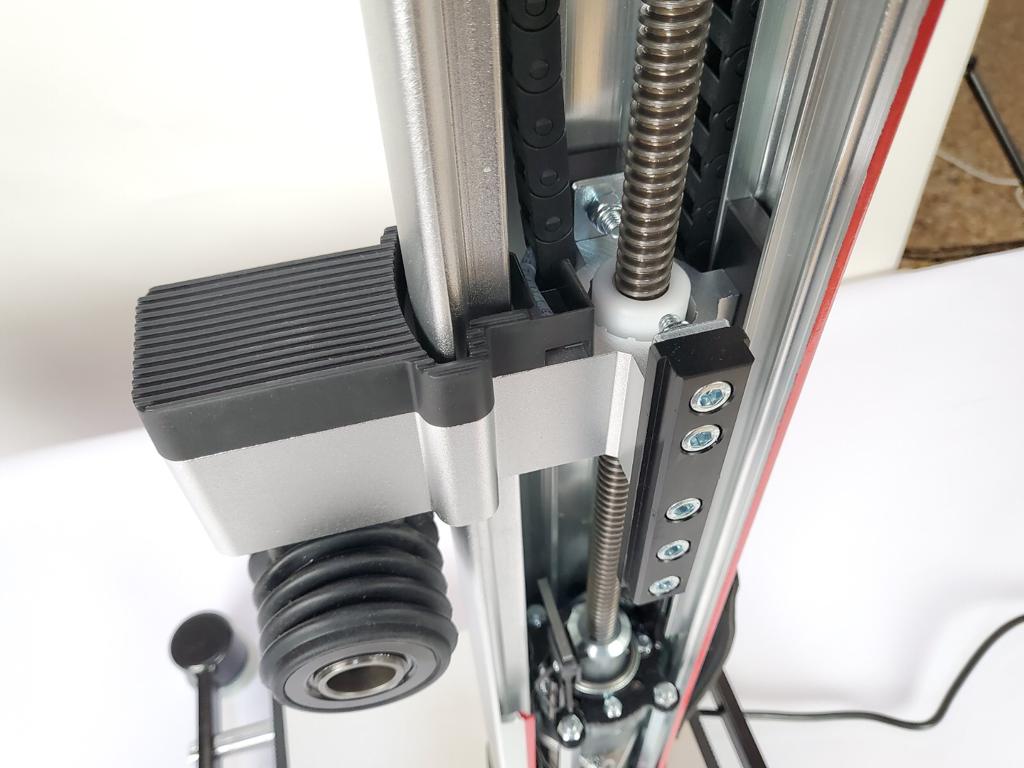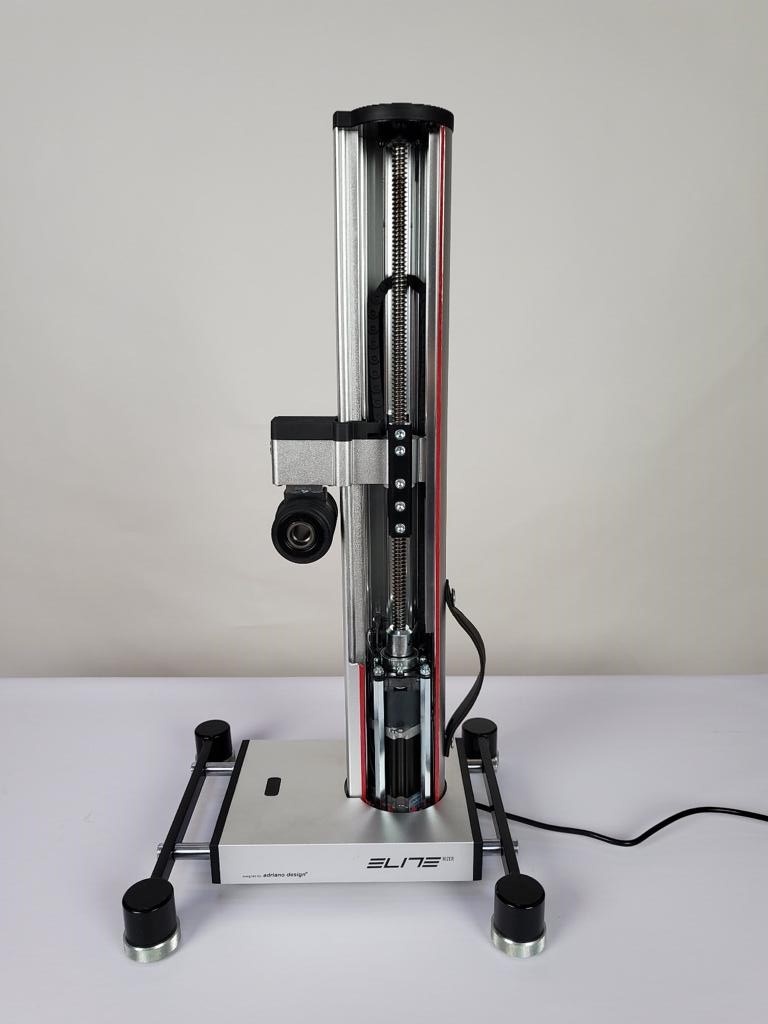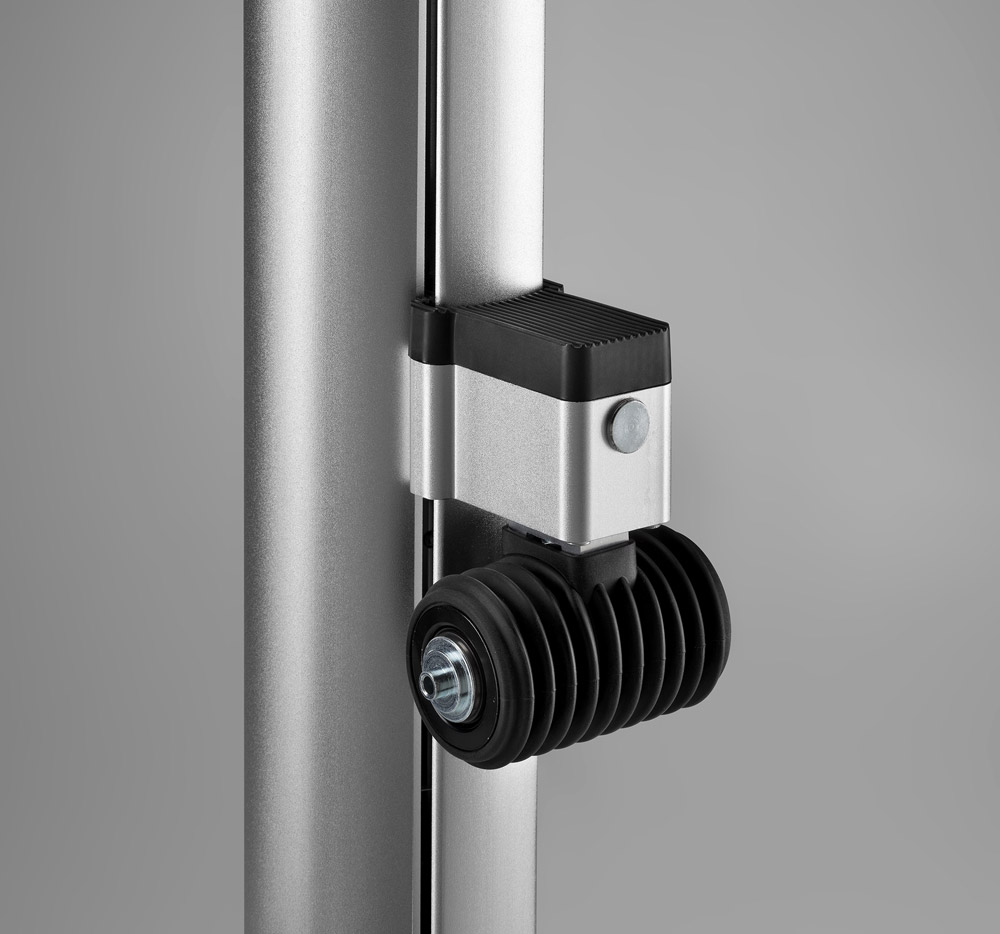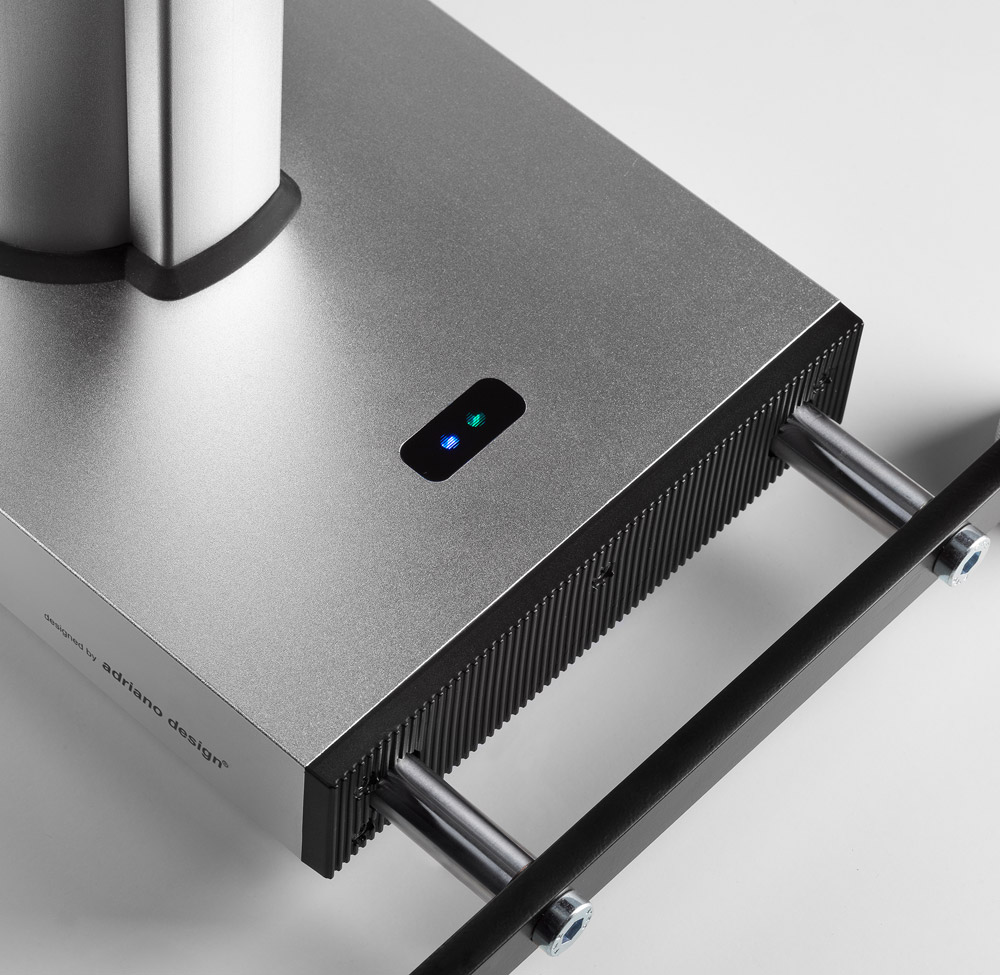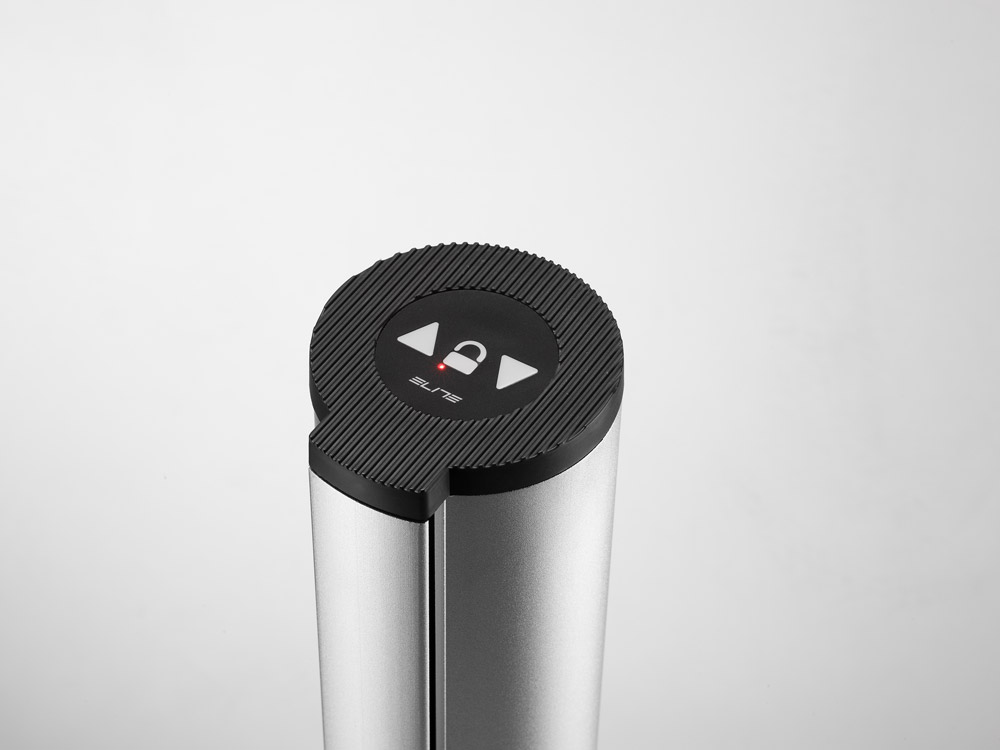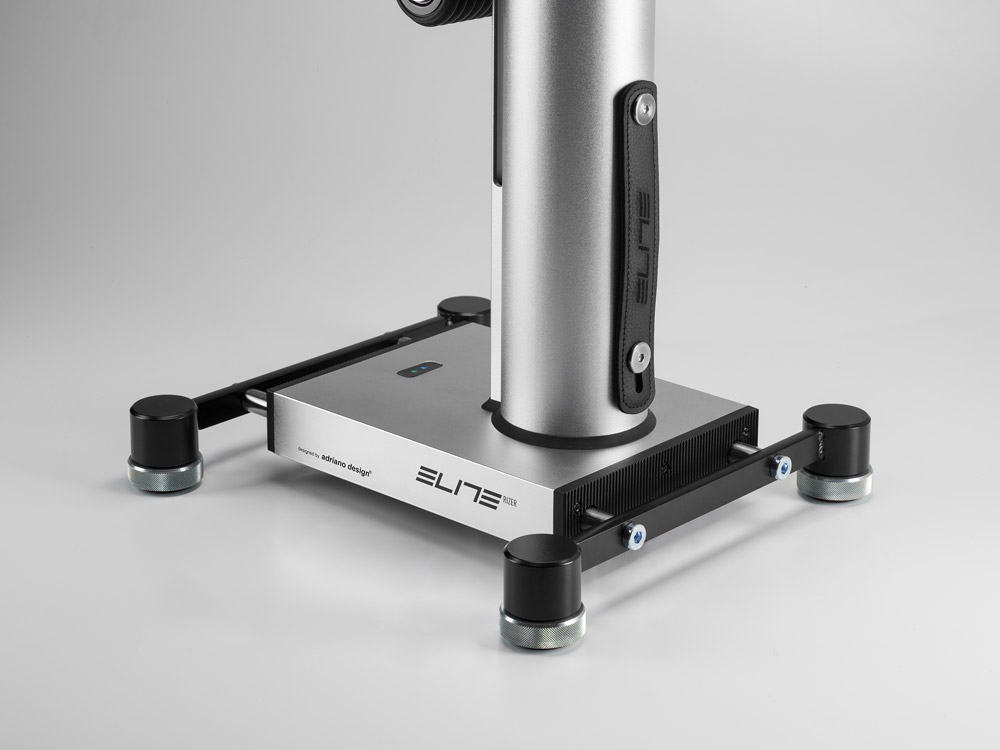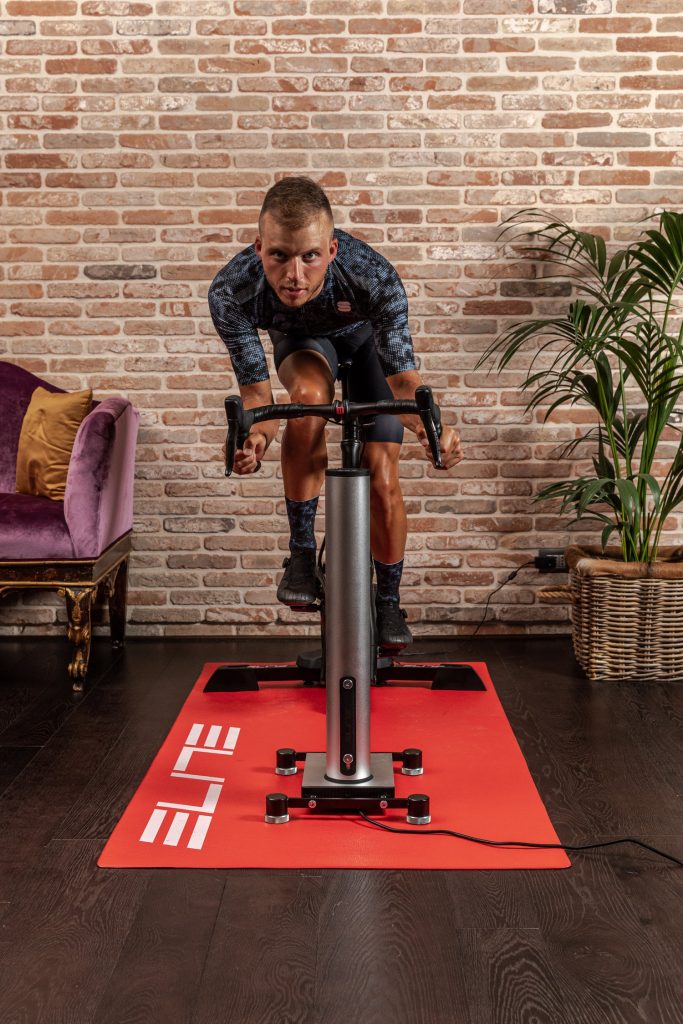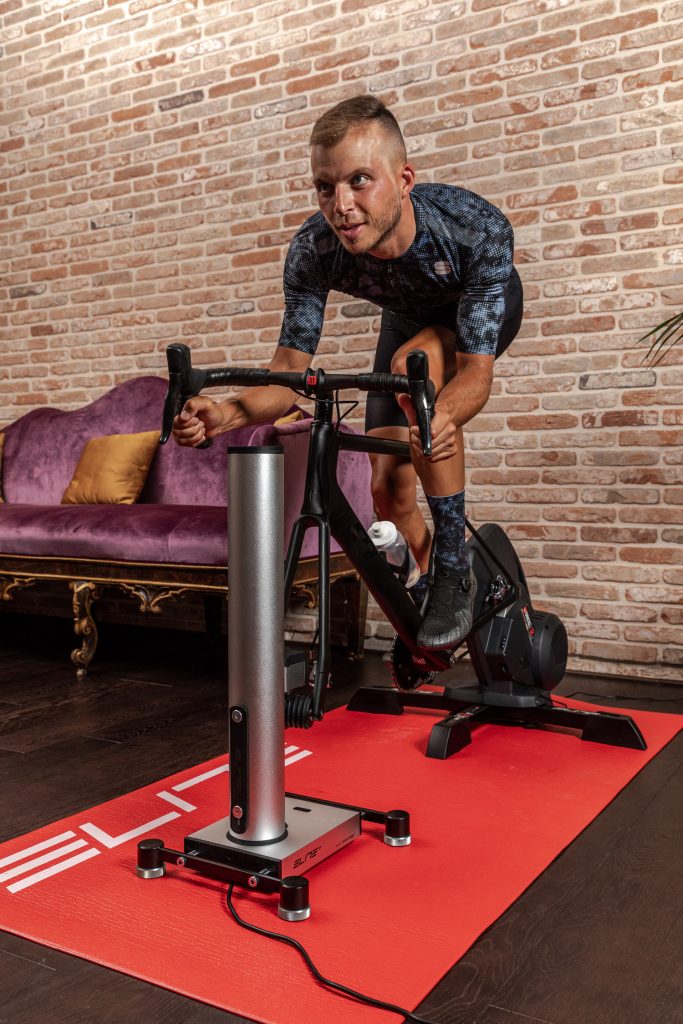After waiting months for the new RIZER by Elite, when it finally arrived it felt like Christmas had come early! For those unfamiliar, the RIZER is an interactive gradient simulator with steering. You simply connect your front forks to the device, pair it to your smart trainer and it rises and falls to simulate the in-game gradients as you ride.
It is the first device that combines gradient control and steering and it will transform your ride, making this perhaps the closest sensation to riding outdoors you can have.
But before we get into the details of this new piece of hardware, it’s probably worth understanding the history of the company that produced it.
About Elite

Founded in 1979, Elite first manufactured home trainers and bike carriers for cars. They soon added hydration products.
Today, they supply their products to the leading teams within the pro peloton including INEOS Grenadiers, Movistar Team, Team DSM, Bahrain Victorious, UAE Team Emirates, Équipe Cycliste Groupama – FDJ, AG2R-Citroën Team, Israel Start-Up Nation, and Cofidis. Effectively, Elite is currently sponsoring more than half of the world’s top teams.
And all of this is managed inside an ancient 19th-century limestone furnace in Fontaniva, a small town 60km from Venice, Italy, which the company painstakingly restored over a 10 year period, completing in 2000. The purpose of returning to this ancient production site was, as CEO Giulio Bertolo stated, “to become as close as possible to our cultural and historical roots.”
Elite have been innovating in the home trainer market extensively and over the last 20 years there has been a real evolution. Elite’s first trainer that connected to a PC for a more interactive and professional training was called the Axiom and was released in 2000. Four years later was the RealAxiom, a home trainer that combined the specific calculations of the Axiom with videos of the most famous races around the world. In 2011 there was the Forte, which had a wireless digital console that created ad-hoc training sessions based on a rider’s requirements and 2013 marked the next big evolution, the Turbo Muin, a fluid-drive direct transmission home trainer. In 2017 the new Drivo model was introduced and was the only home smart trainer with a certified +/- 0.5% accuracy level.
Improvements have been made year-on-year in the development of their smart trainers with their latest being the Direto XR, which has an integrated power meter ensuring +/-1.5% accuracy and gradient simulation up to 24%.
Following the introduction of the Sterzo Smart electronic steering plate in 2020 (the first steering device ever supported by Zwift), Elite developed the RIZER.
The RIZER
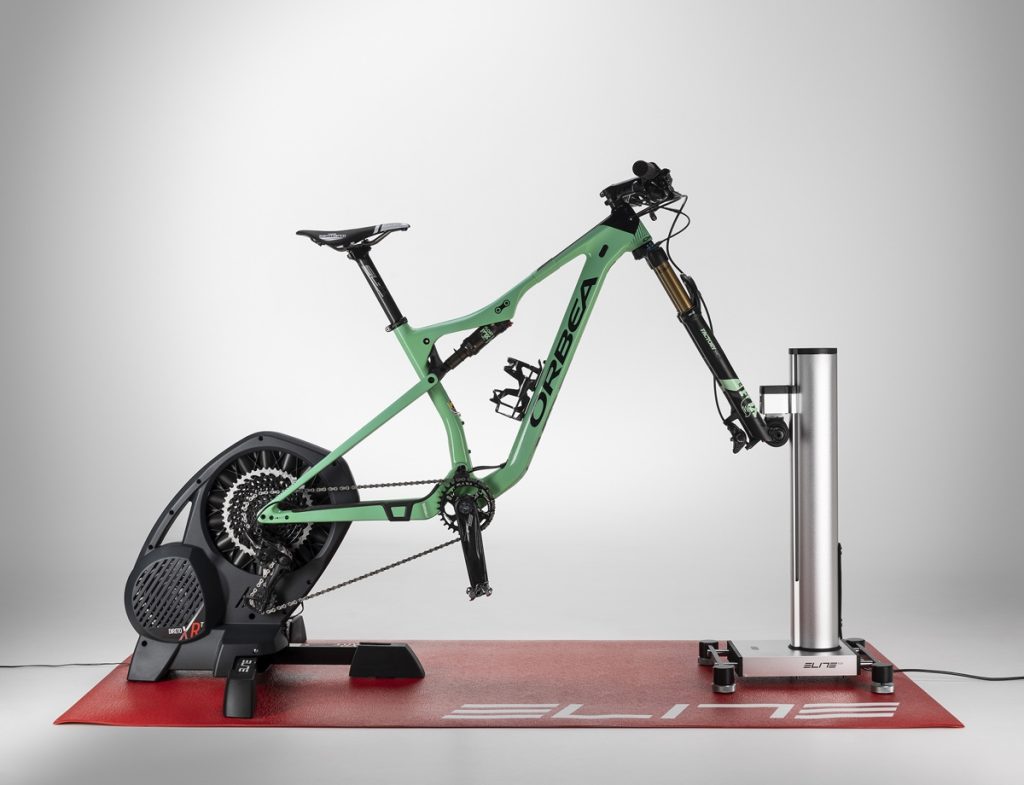
The RIZER is an upright device that comes fully assembled, with a large rectangular base and a mount that you attach to your front fork to allow for steering and changes of pitch for your bike. The device communicates wirelessly with Zwift via Bluetooth and ANT+ FE-C. It is a newly patented system whose goal is to combine steering and gradient simulation for the closest experience to riding outside.
The steering movement of the RIZER lets you freely move your handlebar left and right to move your avatar in game whilst the pitch of the front forks is controlled to mimic going up or down hill, like on the road. Elite notes that the “RIZER will provide with true-to-ride inclines up to 20%. The Elite grade simulator will also add declines as low as -10%.”
Behind the scenes
I reached out to Elite to find out a bit more of the history of this new innovative product and they told me the following: “The development of the project was long and we had to face some challenges. First of all, we changed a couple of concepts in order to find an effective and aesthetically pleasing solution.
One point that took time was the desire to think of a safe solution, discarding belt-driven solutions from the start.
The project from concept to production lasted 2 years, including the 2 months period in which we had to shut down all the activities due to the global pandemic.”
I enquired about the testing of the product, knowing this to be a crucial part of any hardware development, and Elite noted that “the RIZER has been tested for months. We had the first prototypes at the beginning of 2021 and tests were carried out with life testing equipment and with countless cyclists.
The equipment allowed us to test the product to its limits. Life tests with weights of 120kg in continuous movement gave us the confidence on durability and most importantly, safety.
Testing with cyclists has allowed us to refine the user experience. Thanks to their feedback, we adjusted the speed of movement so that it was fast but also natural.
In fact, too abrupt changes in gradient did not create a good feeling during training and this allowed us to develop an algorithm that modulates the speed according to the conditions of the simulation, making the experience very realistic.”
Inner workings
The design and build of the RIZER differs significantly from its competitor, the Wahoo KICKR Climb. Whilst the Climb is built using a belt, the RIZER is constructed with a bolt. This accounts for the weight and what makes the device really solid and secure. In summary, the inner workings look very reliable as you have a metal bolt that the device pitches on.
Technical Specifications
It’s important to highlight the key technical specifications which include:
- Compatible with all commercially-available bicycles, with disc brakes and 12mm thru-axle bikes. The adapter for 15mm thru-axle is included in the box.
- Size: 728x345x387 mm (H x W x L) 28” x 13.5” x 15.2”
- Maximum load: 120 kg (264.5 pounds)
- Weight: 13.7kg (30.2 pounds)
- Maximum grades: Ascend up to 20%, descend down to -10%
- RIZER is compatible with:
- Elite Direto XR (and XR-T)
- Elite Suito (and -T)
- Elite Tuo
- All the Wahoo Kickr trainers which are compatible with the Wahoo Climb (latest versions of the Kickr)
- Elite have left it to individual companies to confirm compatibility with the product
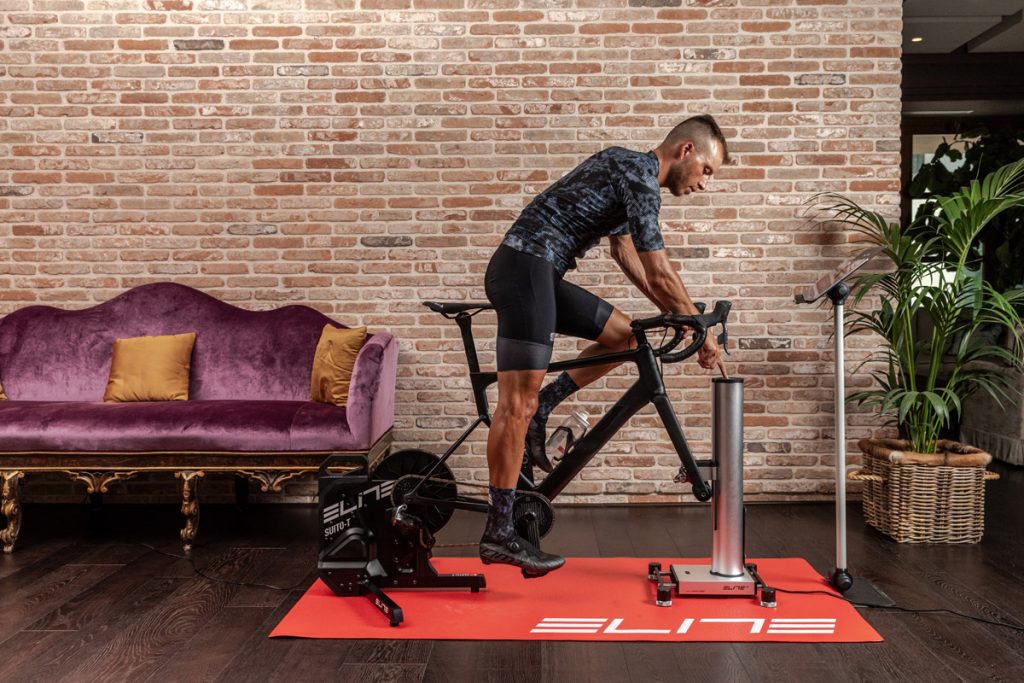
Setting it up
The RIZER is very simple to set up, and as close to “plug and play” as you can get. There is a simple foldout instructional guide included which highlights the key steps.
The important point is to adjust the feet, which unscrew from the steel base to ensure the device is level. These provide a stable platform, making it nearly impossible to tip over and avoiding excessive side-to-side movement during out of the saddle efforts.
The next step is installing the correct adapter for your front forks (all variations are included). Position the forks and be sure to secure the quick release skewer firmly. Plug in the device, along with your trainer.
Finally, pair it with your trainer. Without this, the device won’t get the data from the trainer and adjust the gradient.
To begin the pairing procedure, hold down the padlock button which is located on the top part of the RIZER for 3 seconds. The lights will start blinking as it searches for the closest trainer based on the signal received. If you have multiple home trainers, it’s probably best to turn the others off, so you pair correctly with the intended one!
That’s it, all there is to it. When you load Zwift, you will need to pair the device. Then once you start cycling, provided you have the device set it to “Simulation” mode, it will adjust to the gradient.
How does it work?
There are two modes of operation, Manual and Simulation.
Manual Mode: this allows you to manually control the pitch of the device using the up and down arrows on the RIZER keyboard or RIZER app. Elite have created a dedicated control app to make it easier to configure and use. You won’t need this app to use the device but it will give you easy access to a series of functions including controlling the pitch by tapping the up or down arrow.
Simulation Mode: simulation mode is selected when the light under the padlock button is illuminated. This means that the RIZER will automatically adjust in pitch to the gradient of the road. I just leave the device in simulation mode and it works perfectly well.
For safety, when you stop pedaling and after 5 seconds, the RIZER will return to 0% gradient, allowing you to easily and safely get off from your bike.
Steering: if you have paired the device when loading Zwift, and are doing a free ride in Zwift (or an event with steering enabled), when you turn the handlebars your avatar will move accordingly. The turning is smooth. As this is built-in functionality, when you select the device, you have no option but to use the steering and there is no functionality to lock the handlebars in place. I think this would have been a good feature because when using the RIZER, the steering function is always “On” and it might be that you want to enjoy the pitch of climbing, but not want to steer – these are for those days when you just want to “switch off.” That being said, the fact you can freely move the handlebar gives a nice, realistic ride experience.
In terms of the feel, the mechanism in which the bike’s fork gets attached is designed to give some relief whilst cycling and I certainly don’t feel as stiff after long rides, due to this improved riding position. As Elite states “the RIZER features hardware technology with steering functionality so you can easily move your handlebars left and right when you’re smashing those climbs.
This will improve handlebar feel and comfort, but also it helps you to use the same muscle groups on legs and shoulders that you’d be using if you were riding your bike outdoors, uphill.“
Price Comparison
The cost of the RIZER is £824.99 / €799 / $1099USD, whilst its nearest (and only) competitor is Wahoo’s Climb, priced at £449.00 / €549.99 / $599USD. Of course, the comparison is not entirely fair since the RIZER does come with the integrated steering functionality, which the Climb does not offer.
Testing
Using the Elite Direto XR-T smart trainer, I tested the RIZER on everything Zwift has to offer – particularly the big mountain routes around Watopia.
I enjoyed the sensation of the bike pitching and the front forks moving. It was smooth and comfortable and I never felt unsafe when climbing out of the saddle. (This links back to the earlier point where Elite noted they worked hard to make the movement feel natural. I definitely experienced the fruit of their labors, as the movement from left to right mimicked climbing in real life and made the indoor cycling experience more, well… natural.)
And, the steering is smooth. Both the steering and pitch control were responsive. I didn’t find much (if any) delay between the changes on screen to the pitch of the bike, and there was certainly no delay with the steering. The question you have to ask is “Did I enjoy my Zwift experience more or less with the RIZER?” The answer is undoubtedly “More”, therefore it passed my test.
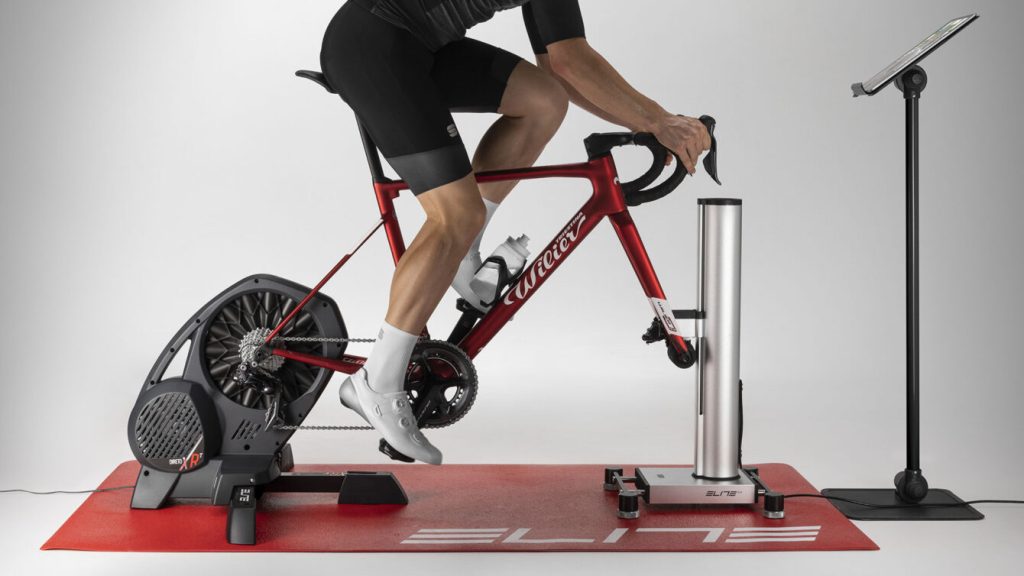
Conclusion
Zwift is already fun, but the RIZER adds another dimension. When you first use it, it is a surprise, but within minutes, you wonder how you lived without it. After spending over 500 hours on my turbo over the last year, it certainly was different to have the front of my bike moving both vertically and horizontally, but once I got familiar with the feel, I liked the fact that the bike would respond to Zwift’s parcours. It created a more immersive experience.
With the added functionality of the steering, you have to engage more with the environment. My one area for improvement would be to be able lock the steering, so you can choose if you want to be able to move your bars or not. Perhaps this was thought about but not possible because when you climb, there is a small amount of movement, like in real life, as you rock left and right with each pedal stroke, meaning the device is fluid.
Overall, if you spend any significant time Zwifting and you are looking for a better experience and you like a good climb, then you won’t go wrong with the RIZER. I appreciate the price point may be off-putting but what price can you put on enjoyment?
Let’s celebrate with a new event!
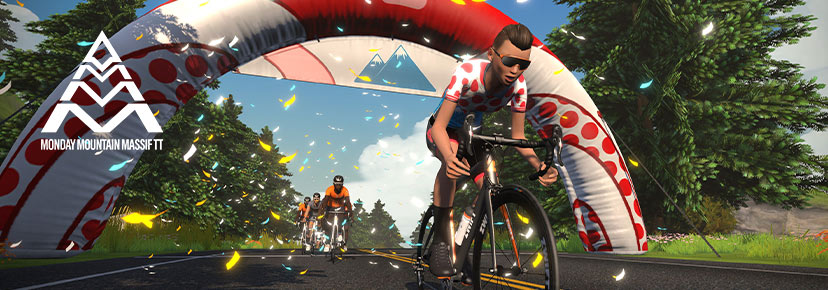
To celebrate the release of this innovative piece of equipment I can’t think of anything better than racing up a mountain. Therefore, I have partnered with Elite to launch a new event in my Mountain Massif TT series called the Midweek Mountain Massif TT.
This new event is going to take riders up the daunting Ven-Top, but don’t worry, the finish is only 10.1km from the starting pens. It’s going to mirror the same tried and tested format of my other two successful Mountain Massif TT events, which include a mass start for categories from the pens, with no time delays. Heart rate monitors will be required and ZwiftPower will be used for official results, with a winner in each category. There is no draft, no powerups, and bike changes are allowed, so it’s your choice if you want to start on a TT bike and zip to the start of the climb before switching to a suitable bike to climb, or start on your best climbing setup and pedal hard at the start to try and limit your losses before the climb begins.
Considering Elite sponsors half of the pro peloton, I have asked them to put the word out so I am hopeful the event will include big names from the cycling world for us to race against.
Therefore come and join us as we race up part of the Ven Top on Wednesday 24th November. I have two events to suit.
Questions or Comments?
Share below!
